Math Acceleration Working Definition:
Before we get started, I want us to start on the same page and get a working definition of what I mean when I say math acceleration. I’m not speaking of speeding up learning for advanced students. I’m referring to the best practice of learning acceleration that is needed to address unfinished learning (learning gaps). I’ll speak about this a few paragraphs down.
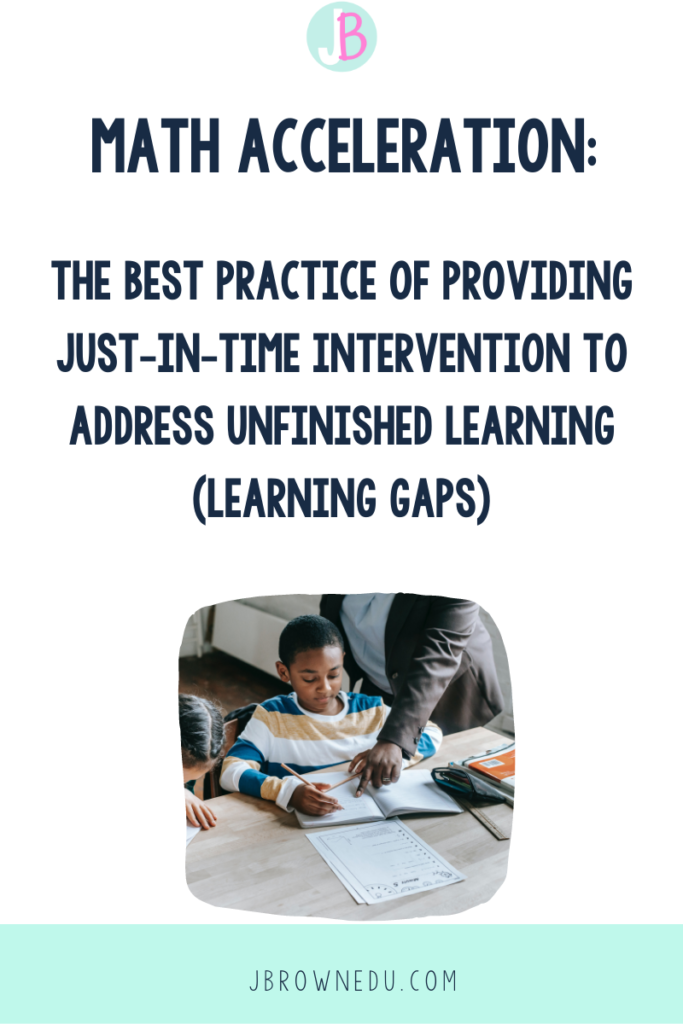
I recently had the amazing opportunity to attend the 50th Annual National Alliance of Black School Educators conference. It was so impactful and inspiring as I sat among some of the most brilliant Black educators. One of the main issues constantly being discussed in the African American community is the unbalanced Black teacher representation in schools with high percentages of Black students.
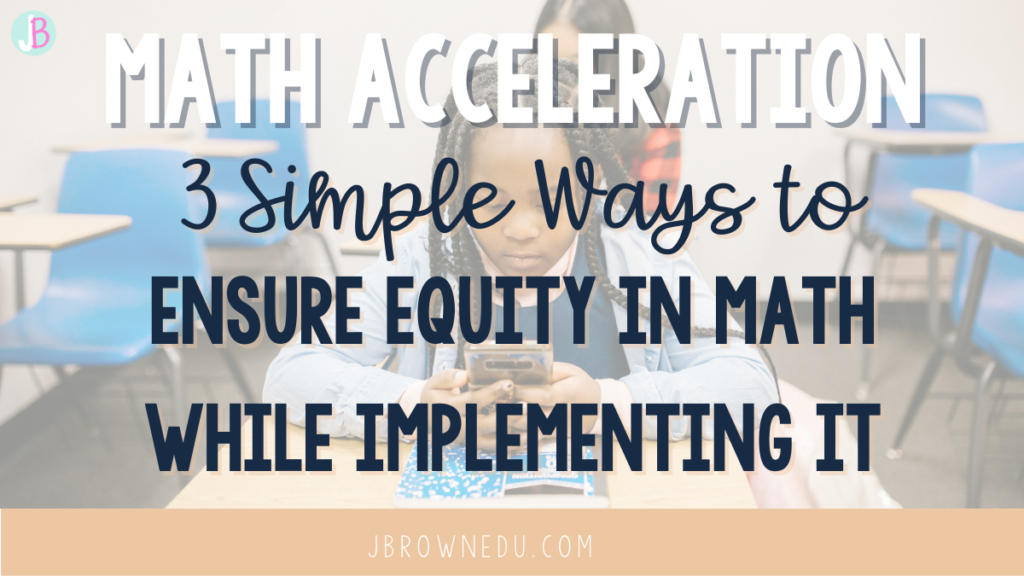
I can directly attest to this. I worked in a school with 82% minority enrollment. From Kindergarten to 5th grade, I was the only Black general education classroom teacher. During my time here, it pained me to watch my colleagues do things they felt made them appear “culturally relevant.” In my opinion, this was only exploiting students and perpetuating the cycle of poverty and a lifestyle that would lead them to become a part of the negative statistics that plague the African- American community. Why are we only exposing Black students to the negative parts of their culture, and giving it a label of “being relevant.” Below are a few examples of what I mean:
Examples of “being relevant”
-promoting music and entertainment that highlights violence, disrespect, promiscuity, drug abuse, greed, materialism, etc.
-unbalanced priority on entertainment/entertainers rather than education
– rewarding students with unhealthy foods that are stereotypical to their culture versus food that would be fed to their own children, thus promoting an unhealthy lifestyle
Pop Culture vs. Cultural Responsiveness
I’d assume, this isn’t only an issue in the African- American community. It happens more often than not because educators do what they think is relevant to pop culture rather than exploring what research says is truly culturally responsive. We can’t assume that stereotypes in pop culture are accurate portrayals of those who belong to that racial group. As a result, educators can risk engaging in actions that misrepresent those they are trying to reach.
Are we doing what’s best for kids or are we doing what is best for our own bias?
So let’s take a look at what math acceleration is so that we can then look at how to ensure it’s done in an equitable way because the pandemic and natural disasters have only exacerbated inequities among students from different races, ability levels, and economic backgrounds.
Math Growth
Math growth in our nation has taken a huge hit. The National Center for Education Statistics (NCES) conducted the National Assessment of Educational Progress (NAEP) for 9-year-old students in 2022 and the results showed a 7-point decline since 2020. In the history of the mathematics NAEP test, this is the first decline ever. Imagine how much anxiety each of your students must feel walking into math class each day.
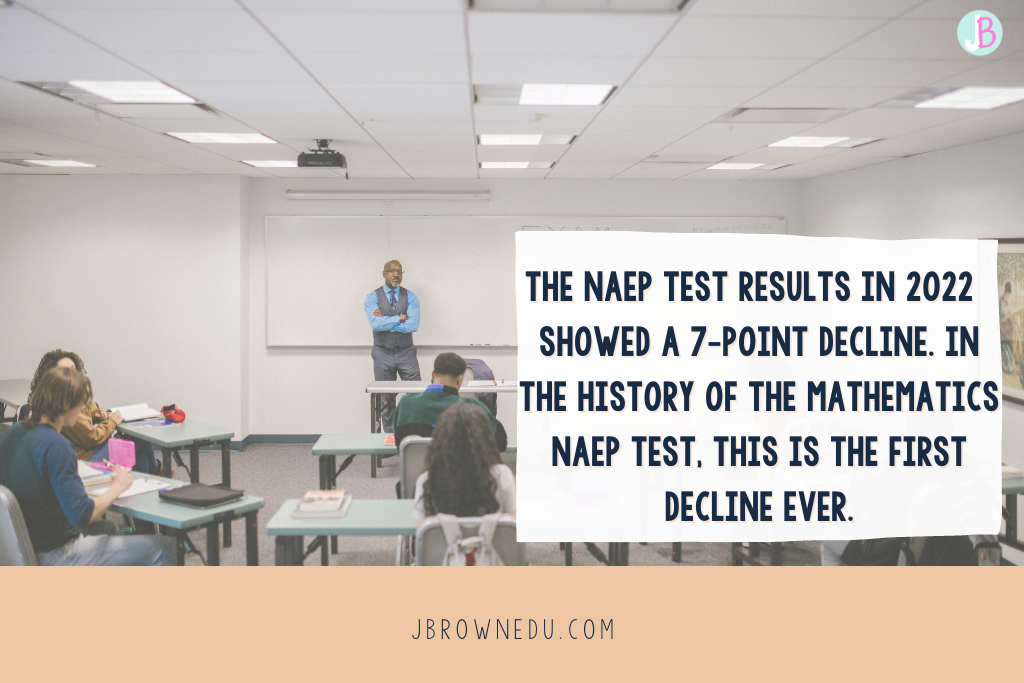
Math Crisis
Research suggests more students have experienced more unfinished learning over the last couple of years than ever before. This is indeed a math crisis. Unfinished learning, popularly known as “learning gaps”, has always been a problem in lower-performing schools. But the one casualty that COVID-19 pandemic has caused is the critical choice that school systems have to make about how to respond.
This can be all too frustrating as you are faced with the daily frustration of trying to choose how to begin your daily lessons. Do you begin by reteaching all of the skills you know they are missing or do we start with the current grade’s skills?
“Accelerate, Don’t Remediate”
The decision boils down to whether we “remediate” or “accelerate” to provide what researchers call “just-in-time” support when necessary.
I am sure you can imagine what I have chosen based on the title of this blog. If you disagree, I encourage you to look at some data from The New Teacher Project (TNTP) research team regarding acceleration.
Just-In-Time Interventions
This approach focuses on accelerating students toward grade-level content. This doesn’t suggest that the learning should be sped up. However, it provides students with “just-in-time” interventions so that they can access grade-level content. I love this approach because acceleration does not throw away the philosophy of interventions. But rather strategically uses intervention in a coherent way to address the grade-level content in a way that does not isolate those all-so-necessary skills. It addresses them as needed in a coherent manner in which they show up in the curriculum.
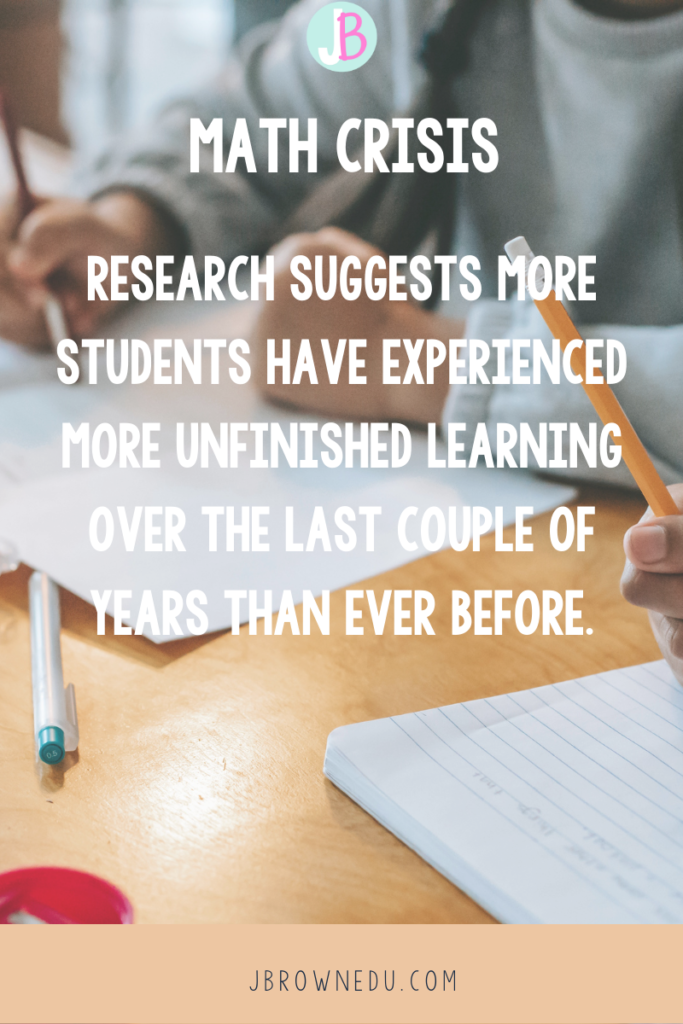
Math Remediation
The downfall of math remediation is that you spend weeks trying to teach skills from previous grade levels at the beginning of the school year. You don’t move on until students show mastery. But what happens when you move on and it’s now time for students to apply those skills to the grade level skill? By the time you get to it, they have forgotten how to do it because they haven’t used it.
Another downfall of math remediation is that you spend so much time on skills that are not grade level. Then, when it’s time for students to go to the next grade level, they are still below grade level, because they didn’t spend the year engaging with grade level skills.
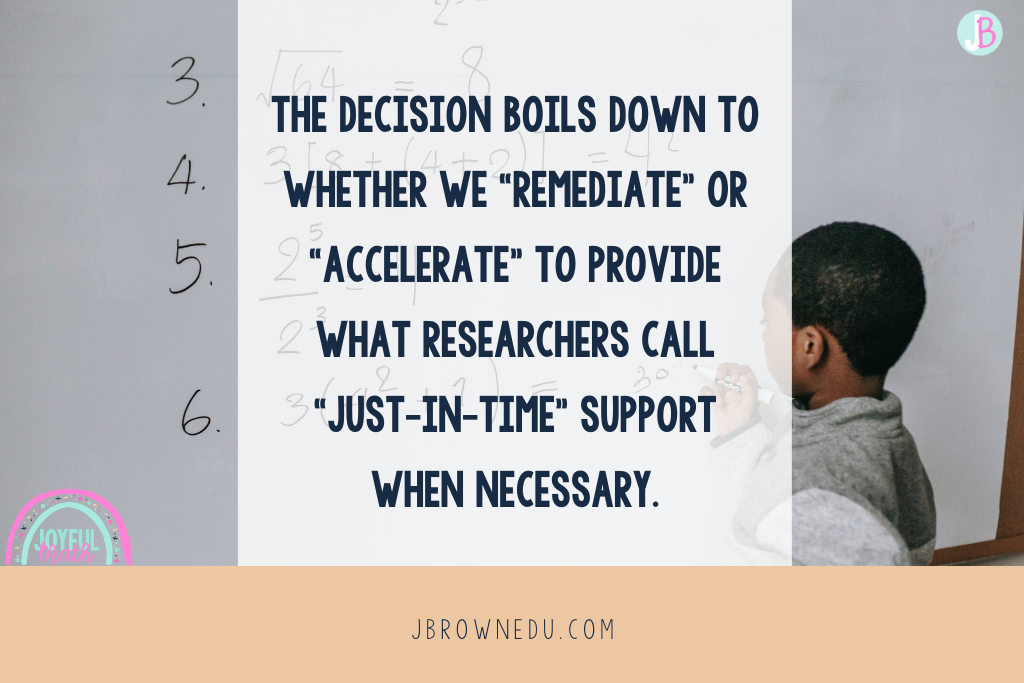
Social and emotional
Embedding social and emotional learning in the math classroom helps to eliminate the barriers that students with math anxiety have. There’s low engagement in your math classroom because there are barriers preventing students from fully engaging in your class. Until they are addressed, growth will be minimal.
If you’d like to know more about learning acceleration and how it connects to social-emotional learning, you can check out this e-book “AccSELerate Learning in Math: 4 Steps to Address Unfinished Learning.”
If you’d like training on addressing unfinished learning, I’d be glad to connect with you in the online course within the Joyful Math Society.

Now that we have a better understanding of math acceleration, let’s look at how to ensure equity.
Equity in Math
The National Council of Teachers of Mathematics has six principles that address overarching themes. Equity in math is one of those principles. When thinking about equity, this does not mean that all students should receive instruction that is identical. However, it promotes students having access to high-quality instruction no matter their background.
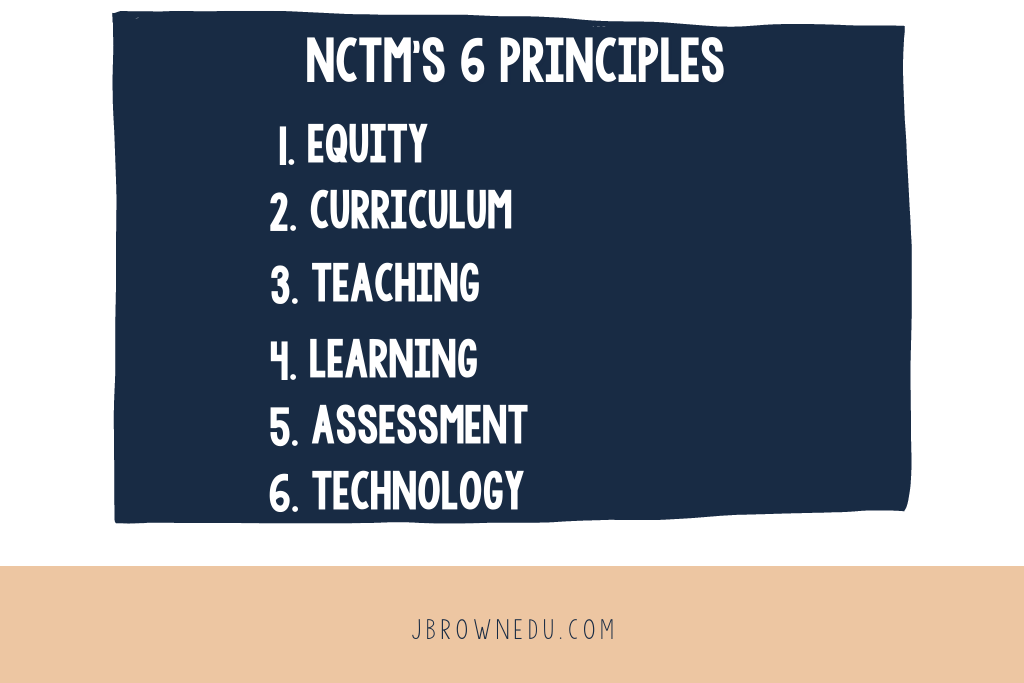
Equity is not about embedding pop culture in your classroom. It’s about high-quality instruction, however, there are obstacles that prevent students from fully engaging in high-quality instruction. We can teach until the paint falls off of the walls. However, if these matters aren’t addressed, we still won’t be able to reach student achievement fully.

Here are 3 simple ways to ensure equity in math when implementing math acceleration:
1. Communicate High Expectations in Word and Deed
If we put work before students, do WE first believe that they can achieve it? Sometimes we can have high expectations, but we may be communicating something different to students. Are we mindful of the barriers that prevent students from engaging with the high expectations that are put out before them? Or do we immediately give them less rigorous work without giving them the opportunity to engage in productive struggle? If we do value productive struggle, are students provided with scaffolds to support them and resources to help them believe in themselves? Do our words align with our actions?
Student Self Efficacy in Math
Another barrier to high expectations is students believing that they can actually achieve the high expectations. What is being done to increase their self-efficacy? Students need positive self-efficacy in order to even attempt the work that is set before them. Low performance is related to math anxiety, which is related to poor self-efficacy.
Don’t set the bar low for students when providing just-in-time interventions. Introduce the just-in-time intervention to students in a roadmap. Show students the connection between the work they are doing and how it’s connected to the end goal. It should not be presented to them as doing work that is extremely below grade level. Make sure that they know what their end goal is.
2.Provide Support for ALL
Scaffolded supports work great for students with math anxiety. As students are working through the roadmap, it is so important to help them create supports. These look like tables, charts, anchor charts, etc. It’s ok if they need to use them for a while. Allow students to use the supports until they feel comfortable without them.
Students have various needs and receive information in different ways. When working with students, I encourage helping students create personal strategies. These are strategies that work for them based on where their breakdown in understanding is.
3.Reflect on your own personal bias
Again, when aiming to be culturally relevant, be careful not to go by pop culture or your own bias about students’ cultures. Survey students and see what their interests are. Even if they are interested in pop culture, help them to highlight positive things about their culture. When thinking about increasing self-efficacy, show them others in their culture who have made positive impacts. For example, if students are interested in becoming a football players, there are football players that have played in the NFL as well as earned PhDs in Math.
Make sure that students can see the picture holistically. They need to see others who have encountered struggles and overcome those struggles, whether in math or in life. A component of building student self-efficacy is vicarious experiences. It’s why it seems like everyone on social media is doing the same thing. That’s because once someone that looks like you does something, it makes you feel like you can do it too.
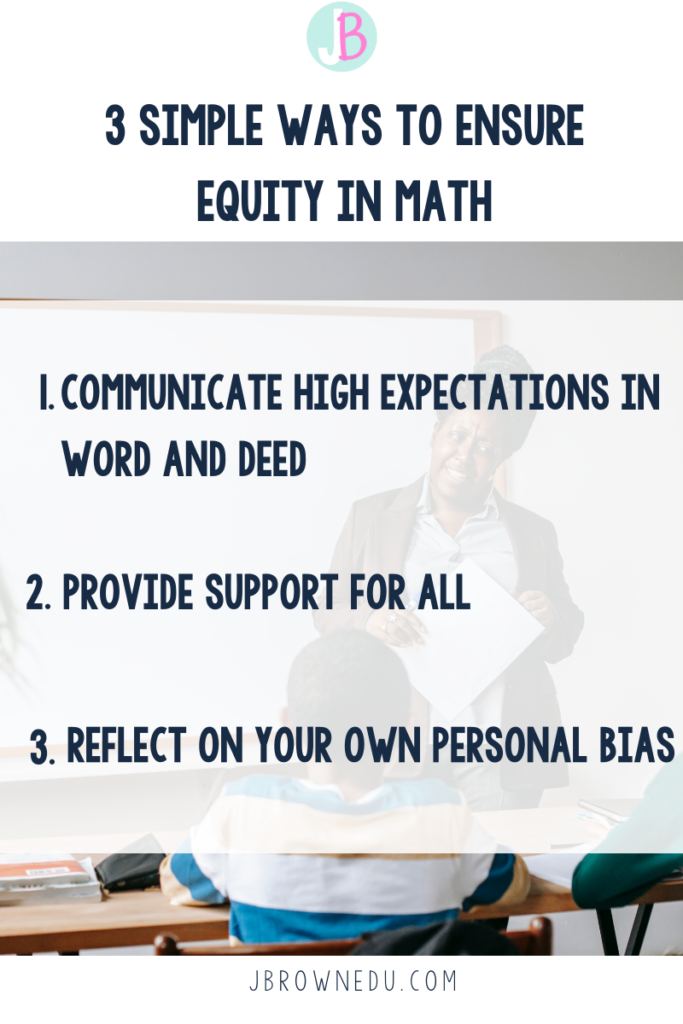
If you’d like a list of diverse mathematicians with portraits and biographies, you can get it here.

By now you’re probably like, “Jay how can I get started with this tomorrow?”
No worries friend, I have you covered. Just to recap though, equity is about making sure that students have access to high-quality instruction and discovering barriers that prevent that. With this FREE guide, you can start implementing 5 best practices that will help you get to know your students. You can begin identifying how to serve your students. Make your classroom a place where students feel comfortable, exhibit confidence, and become college and career ready!!

